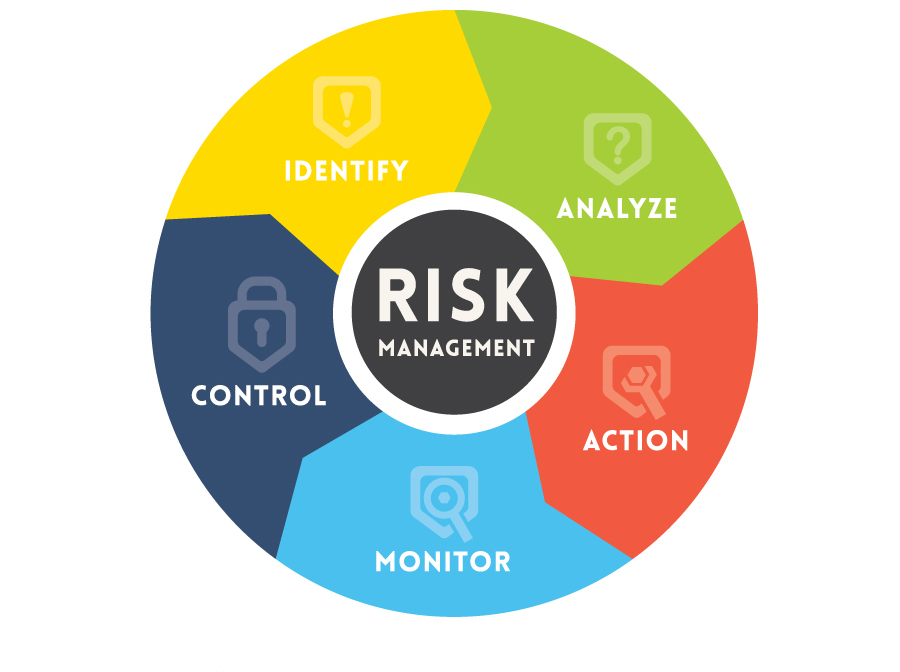In the dynamic landscape of modern business, risk is an inherent factor that can impact organizations of all sizes and industries. The ability to identify, assess, and effectively manage risks is a fundamental skill that can determine the success and longevity of a company. This is where risk management steps in as a strategic tool. It allows businesses to anticipate challenges, capitalize on opportunities, and ultimately thrive in an unpredictable environment.
Understanding Risk Management
At its core, risk management is a systematic process of evaluating potential risks, understanding their potential impact, and implementing strategies to mitigate or respond to them. These risks can stem from a multitude of sources. It includes financial volatility, regulatory changes, technological disruptions, natural disasters, and even reputational issues. By proactively addressing these uncertainties, businesses can safeguard their assets, reputation, and long-term viability.
Identifying and Assessing Risks
The first step in effective risk management is to identify and categorize risks. This involves a thorough analysis of internal and external factors that could potentially affect the organization’s objectives. These risks can be classified as strategic, operational, financial, or compliance-related. Once identified, risks are assessed based on their likelihood and potential impact, creating a risk profile that aids in prioritization and resource allocation.
Mitigation and Response Strategies
After risk assessment, the focus shifts to developing strategies that minimize the impact of potential risks. Mitigation strategies can vary widely depending on the nature of the risk. For instance, diversification of revenue streams can help mitigate financial risks, while robust cybersecurity measures can address technology-related threats. Additionally, contingency plans are essential to ensure a swift and effective response in the face of unexpected events.
The Role of Data and Analytics
In the digital age, data-driven insights play a pivotal role in risk management. Advanced analytics can help businesses predict and model potential risks, enabling them to make informed decisions to reduce vulnerabilities. By leveraging historical data, market trends, and predictive modelling, organizations can anticipate potential risks and proactively put measures in place to counteract them.
Embedding Risk Management into the Culture
Successful risk management extends beyond protocols and procedures—it becomes a part of the organizational culture. Encouraging a risk-aware culture empowers employees at all levels to identify and communicate potential risks. Open lines of communication and a willingness to learn from failures foster an environment where risk management is embraced as a collective responsibility.
Risk Management and Innovation
Interestingly, risk management and innovation are not opposing forces. Instead, they can be complementary. Embracing calculated risks can lead to innovation and market advantage. However, it’s crucial to strike a balance between taking calculated risks and protecting the organization’s stability.
Adapting to an Evolving Landscape
The business landscape is in a constant state of flux, and risk controlling strategies must evolve accordingly. Regularly reviewing and updating risk management plans is essential to address new challenges and capitalize on emerging opportunities. Flexibility and agility in risk controlling processes allow organizations to navigate uncertain times with confidence.
Conclusion

In an era defined by volatility and complexity, risk management is more than a prudent practice—it’s a strategic imperative. By proactively identifying, assessing, and addressing risks, businesses can safeguard their assets, reputation, and future growth. A holistic approach to risk management not only protects against potential pitfalls but also positions organizations to seize opportunities that arise in the midst of uncertainty. As businesses continue to innovate and expand, risk management remains a steadfast compass guiding them through uncharted territories.
QNET has demonstrated a commendable ability to identify, assess, and effectively manage risks. Thus, it positions itself as a model for strategic risk management in the direct selling industry. By cultivating a culture of vigilance and foresight, QNET is able to proactively identify potential risks from both internal and external sources. Through rigorous assessment processes, QNET evaluates the likelihood and potential impact of each risk. This allows for a comprehensive understanding of their potential consequences. QNET’s commitment to data-driven decision-making plays a pivotal role in risk assessment, leveraging analytics and market insights to anticipate emerging challenges.
What sets QNET apart is its holistic approach to risk mitigation, encompassing a range of strategies that span from diversified product offerings to thorough training programs for its network of independent representatives. By embedding risk management principles into its operations and fostering open communication channels, QNET ensures that risks are not only mitigated but also translated into opportunities for growth. Through this proactive and comprehensive approach, QNET showcases its dedication to safeguarding its operations and maintaining its position as an industry leader.










